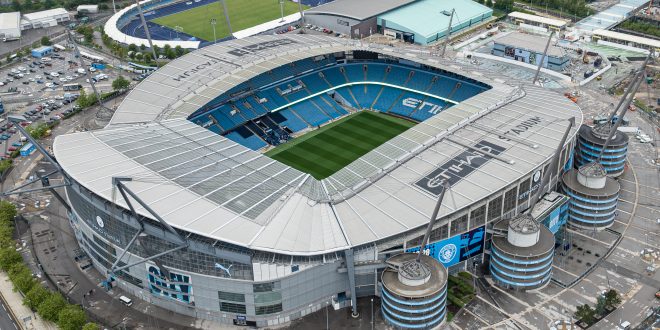Bali, the Island of Gods, has been making waves recently not just for its stunning beaches and vibrant culture, but also for its growing presence in the international sports scene. Its recent hosting of high-profile tennis tournaments has got people talking, especially ministers and investors, about the potential of sports infrastructure as a real, viable investment model. It’s not just about the immediate thrill of the game, is it? It’s about the lasting impact and what it can bring to the community. Let’s dive into why this is such an interesting development and what it could mean for the future, shall we?
Bali’s Tennis Arena: A Case Study in Sports Investment
The Genesis of the Project
Every great project has a beginning, right? The development of Bali’s state-of-the-art tennis arena wasn’t just a spontaneous decision. It was the result of strategic planning and a vision to elevate the island’s status as a global sports and tourism hub. I imagine there were countless meetings, negotiations, and maybe even a few sleepless nights involved! It’s all about creating a venue that can host world-class events and provide top-notch facilities for athletes and spectators alike. Of course, this kind of ambition requires significant investment, but if done right, the returns can be pretty substantial. I mean, think about it: Bali already has the scenery and the culture, now add world-class tennis?
Economic Impact and Tourism Boost
Okay, so let’s talk numbers. Hosting international tennis events brings in a flood of tourists, which is fantastic for the local economy. Hotels, restaurants, and shops all see a surge in business. Plus, there’s the added benefit of global visibility. When the world sees Bali hosting these events, it reinforces the island’s image as a desirable destination. It’s like free advertising on a massive scale. And I’m not just talking about the big tournaments. Even smaller events can have a significant impact. It’s a ripple effect, you know? More events, more tourists, more money flowing into the local economy. It’s a win-win situation… hopefully.
Beyond Tennis: Diversifying the Sports Infrastructure Portfolio
Exploring Other Sports with Investment Potential
Tennis is great, but why stop there? Indonesia has the potential to become a hub for a variety of sports. Think about surfing, for example. Bali is already a surfer’s paradise. Imagine investing in world-class surfing facilities and hosting international competitions. Or what about badminton? It’s a hugely popular sport in Indonesia, and the country has produced some of the world’s best players. Investing in badminton academies and arenas could attract even more talent and generate significant revenue. The possibilities are endless, really. It just takes vision and the willingness to take a chance.
The Role of Public-Private Partnerships
Now, let’s get practical. Building and maintaining sports infrastructure requires a lot of money. That’s where public-private partnerships (PPPs) come in. PPPs allow governments to share the financial burden with private investors, which can make these projects more feasible. Plus, private companies often bring expertise and efficiency that can help ensure the projects are well-managed and profitable. I’ve heard some stories about PPPs going wrong, so, fingers crossed, the right partners are found. When it works, it really works. It’s like the government and private sector teaming up to build something amazing together.
Challenges and Considerations for Sports Infrastructure Investment
Sustainability and Long-Term Viability
Of course, it’s not all sunshine and roses. Investing in sports infrastructure comes with its own set of challenges. One of the biggest is ensuring sustainability. You don’t want to build a fancy arena that falls into disrepair after a few years. It’s important to consider the long-term costs of maintenance and operation, and to have a plan in place to keep the facilities in good condition. And let’s not forget about environmental sustainability. We need to make sure these projects are environmentally friendly and don’t harm the surrounding ecosystem. It’s a delicate balance, isn’t it? Building for the future without destroying the present.
Community Engagement and Social Impact
Another key consideration is community engagement. These projects shouldn’t just benefit the wealthy tourists and athletes. They should also benefit the local community. That means creating jobs, providing opportunities for local businesses, and making the facilities accessible to everyone. It’s about building something that the whole community can be proud of. I mean, what’s the point of having a world-class arena if the locals can’t even afford to attend events there? It’s also about ensuring the arena provides local communities with more opportunities to get involved with sports and develop their skills.
The Future of Sports Investment in Indonesia and Beyond
Leveraging International Events for Development
Bali’s experience shows that hosting international sports events can be a powerful catalyst for development. It’s not just about the immediate economic benefits. It’s about the long-term impact on the local economy, the community, and the country’s image. By leveraging these events strategically, Indonesia can attract more investment, create more jobs, and improve the quality of life for its citizens. It’s a long game, but if played right, the rewards can be huge.
Key Takeaways for Ministers and Investors
So, what are the key takeaways for ministers and investors? First, sports infrastructure can be a viable investment model, but it requires careful planning and execution. Second, PPPs can be a useful tool for sharing the financial burden. Third, sustainability and community engagement are crucial for long-term success. And finally, don’t be afraid to think outside the box and explore new sports and opportunities. Remember, it’s not just about the game. It’s about building a better future for everyone.
All in all, Bali’s investment in sports infrastructure serves as a compelling case study. Hopefully, it encourages more thoughtful development and investment in similar projects across Indonesia and beyond. So, what do you think? Ready to pack your bags and check out the Bali tennis scene? Maybe even invest a little yourself? Food for thought, anyway. Let me know what you reckon!
 Cloudabouts
Cloudabouts




